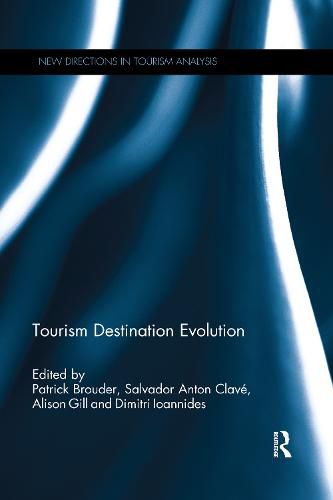Readings Newsletter
Become a Readings Member to make your shopping experience even easier.
Sign in or sign up for free!
You’re not far away from qualifying for FREE standard shipping within Australia
You’ve qualified for FREE standard shipping within Australia
The cart is loading…






Outlining the need for fresh perspectives on change in tourism, this book offers a theoretical overview and empirical examples of the potential synergies of applying evolutionary economic geography (EEG) concepts in tourism research. EEG has proven to be a powerful explanatory paradigm in other sectors and tourism studies has a track record of embracing, adapting, and enhancing frameworks from cognate fields. EEG approaches to tourism studies complement and further develop studies of established themes such as path dependence and the Tourism Area Life Cycle. The individual chapters draw from a broad geographical framework and address distinct conceptual elements of EEG, using a diverse set of tourism case studies from Europe, North America and Australia. Developing the theoretical cohesion of tourism and EEG, this volume also gives non-specialist tourism scholars a window into the possibilities of using these concepts in their own research. Given the timing of this publication, it has great potential value to the wider tourism community in advancing theory and leading to more effective empirical research.
$9.00 standard shipping within Australia
FREE standard shipping within Australia for orders over $100.00
Express & International shipping calculated at checkout
Outlining the need for fresh perspectives on change in tourism, this book offers a theoretical overview and empirical examples of the potential synergies of applying evolutionary economic geography (EEG) concepts in tourism research. EEG has proven to be a powerful explanatory paradigm in other sectors and tourism studies has a track record of embracing, adapting, and enhancing frameworks from cognate fields. EEG approaches to tourism studies complement and further develop studies of established themes such as path dependence and the Tourism Area Life Cycle. The individual chapters draw from a broad geographical framework and address distinct conceptual elements of EEG, using a diverse set of tourism case studies from Europe, North America and Australia. Developing the theoretical cohesion of tourism and EEG, this volume also gives non-specialist tourism scholars a window into the possibilities of using these concepts in their own research. Given the timing of this publication, it has great potential value to the wider tourism community in advancing theory and leading to more effective empirical research.